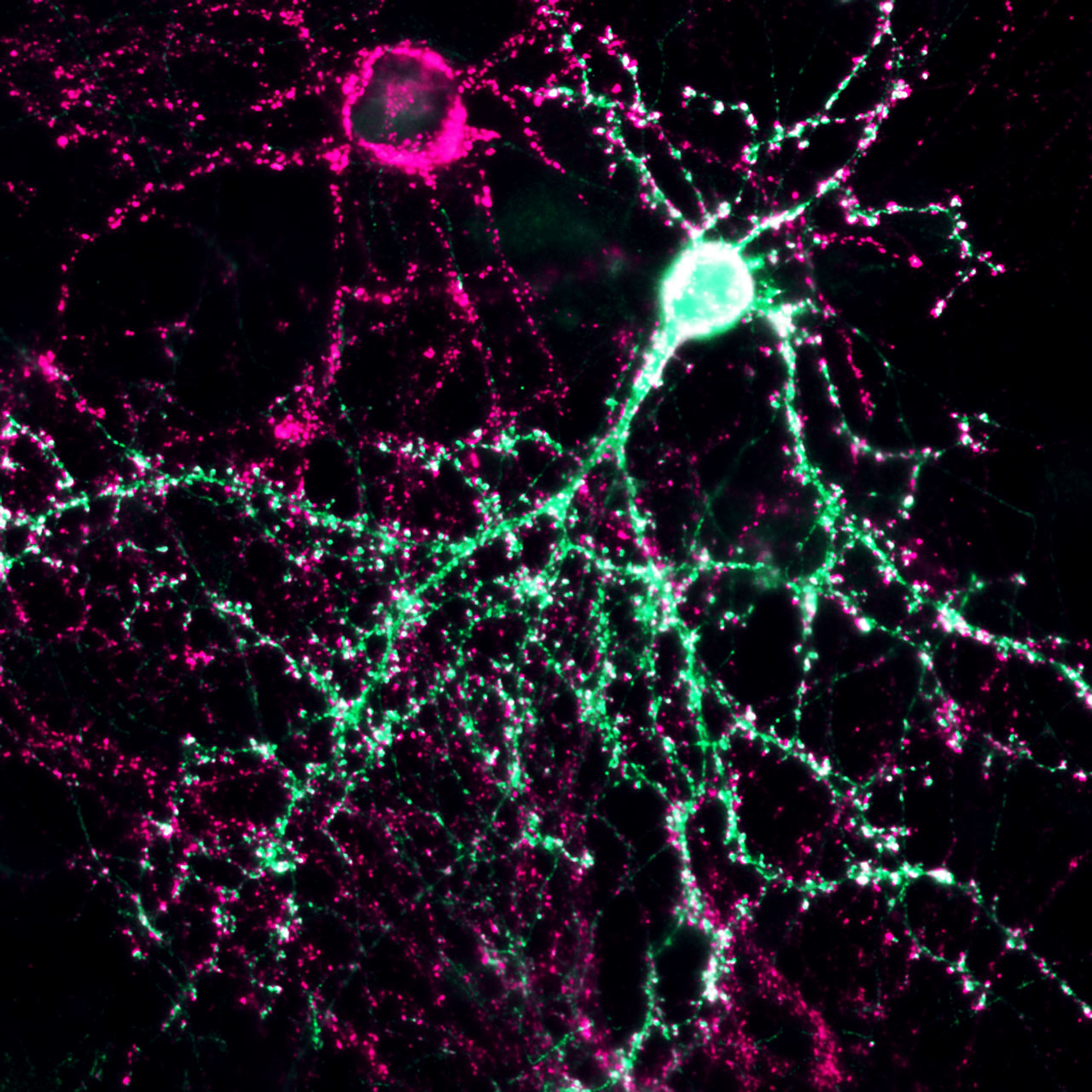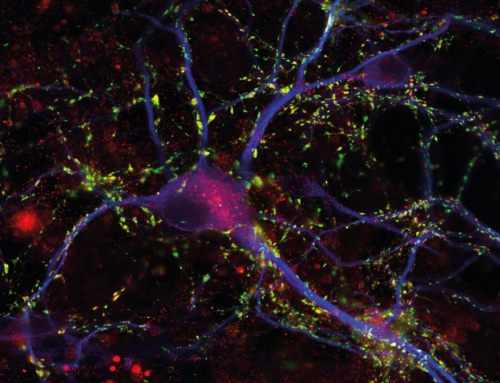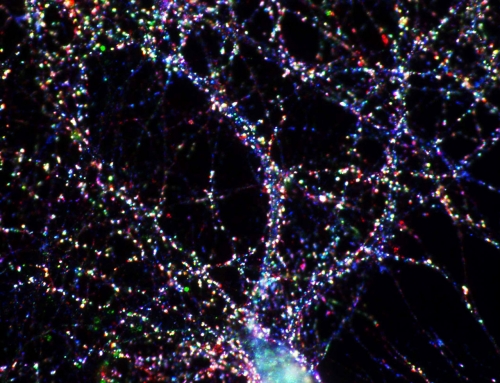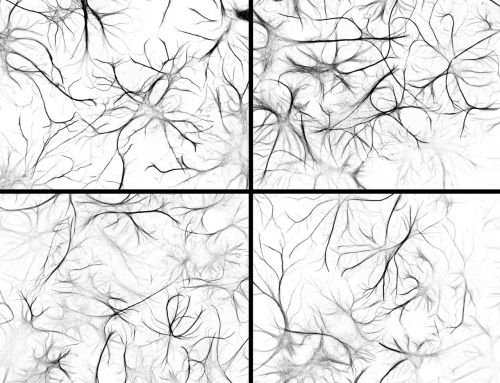Introduction of DNA into a nerve cell
To determine the function of a protein one can test how the protein changes the features of a cell. To this end, DNA encoding the protein is introduced into a cell. Here, we introduced the protein Neuroligin-1 (green) into a nerve cell. The experiment revealed that a) Neuroligin-1 is transported to the receiving sites of the nerve cell; b) that it increases the number of these sites; and c) that it also increases the number of contact sites. A cell overexpressing Neuroligin-1 thus has more connections with other nerve cells than usual. Mutations in Neuroligin type proteins have been implicated in cases of autism.
Image details
Image acquisition technique: epifluorescence.
Courtesy: Thomas Dresbach (UMG, CNMPB). I took the image at the Institute for Anatomy and Cell Biology in Heidelberg with the support of Professor Joachim Kirsch.





